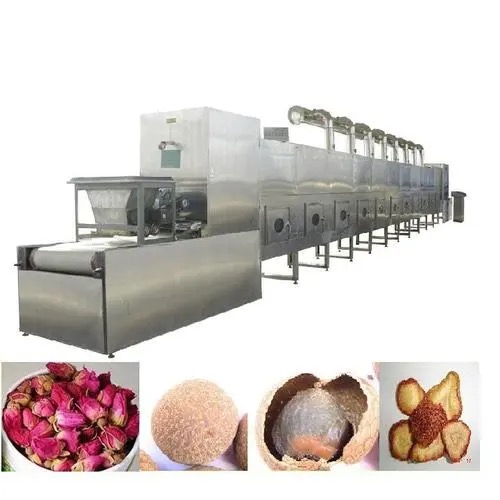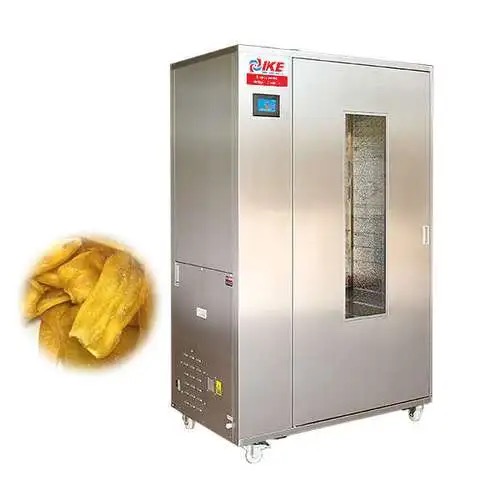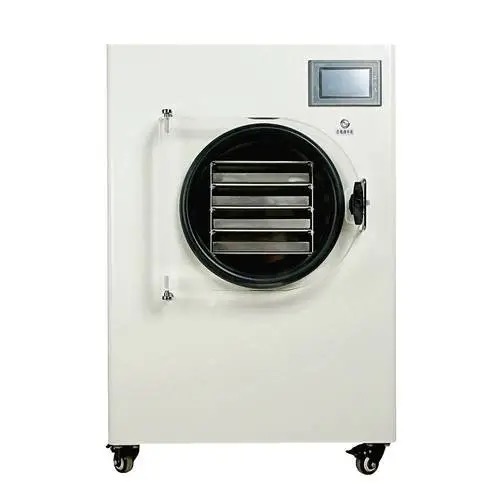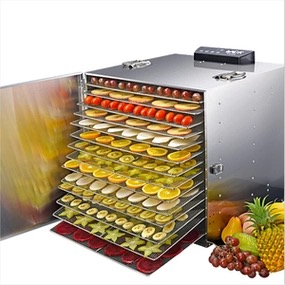
Content Menu
● Introduction to Fruit Dryer Machines
● The Rise of Food Dehydrators in Australia
● Benefits of Using a Fruit Dryer Machine
>> 1. Preservation of Nutrients
>> 2. Extended Shelf Life
>> 3. Space-Saving Storage
>> 4. Versatility in the Kitchen
● Choosing the Right Fruit Dryer Machine in Australia
>> 1. Capacity
>> 2. Temperature Control
>> 3. Airflow Design
>> 4. Noise Level
>> 5. Energy Efficiency
● Popular Fruit Dryer Machine Brands in Australia
● How to Use Your Fruit Dryer Machine
>> 1. Preparation
>> 2. Pretreatment
>> 3. Arranging
>> 4. Setting
>> 5. Drying Time
>> 6. Storage
● Beyond Fruits: Exploring the Versatility of Your Dehydrator
>> 1. Making Jerky
>> 2. Drying Herbs
>> 3. Creating Fruit Leathers
>> 4. Drying Vegetables
>> 5. Making Yogurt
● The Future of Food Preservation in Australia
● Conclusion
● Frequently Asked Questions
>> 1. What is the best temperature for drying fruits in a dehydrator?
>> 2. How long does it take to dry fruits in a dehydrator?
>> 3. Are food dehydrators energy-efficient?
>> 4. Can I dehydrate frozen fruits?
>> 5. How long do dehydrated fruits last?
Introduction to Fruit Dryer Machines
In the land down under, where the sun-kissed fruits and vegetables are abundant, Australians are increasingly turning to fruit dryer machines to preserve their bountiful harvests. These ingenious devices, also known as food dehydrators, have become essential kitchen appliances for health-conscious individuals and culinary enthusiasts alike. Whether you're looking to extend the shelf life of your garden's produce or create delicious, nutritious snacks, a fruit dryer machine is your ticket to a world of flavor and convenience.
The Rise of Food Dehydrators in Australia
The popularity of food dehydrators in Australia has skyrocketed in recent years. As more people become aware of the benefits of dehydrated foods, the demand for high-quality fruit dryer machines has increased significantly. These versatile appliances are not just for drying fruits; they can handle a wide range of foods, including vegetables, herbs, meats, and even yogurt.
Australian consumers are particularly drawn to stainless steel food dehydrators for their durability and ease of cleaning. These machines come in various sizes, from compact models perfect for small kitchens to large, multi-tray dehydrators capable of processing large quantities of food at once.

Benefits of Using a Fruit Dryer Machine
1. Preservation of Nutrients
One of the primary advantages of using a fruit dryer machine is the preservation of nutrients. Unlike other preservation methods that may involve high heat or chemical additives, dehydration retains most of the vitamins, minerals, and enzymes present in fresh produce. This makes dehydrated fruits and vegetables an excellent source of concentrated nutrients.
2. Extended Shelf Life
By removing moisture from foods, fruit dryer machines significantly extend their shelf life. Properly dehydrated fruits can last for months or even years when stored correctly, reducing food waste and allowing you to enjoy your favorite seasonal fruits all year round.
3. Space-Saving Storage
Dehydrated foods take up much less space than their fresh counterparts. This is particularly beneficial for those living in smaller homes or apartments, where storage space is at a premium. A few jars of dehydrated fruits and vegetables can replace shelves full of fresh produce.
4. Versatility in the Kitchen
From creating homemade trail mixes to preparing ingredients for gourmet recipes, a fruit dryer machine opens up a world of culinary possibilities. Dehydrated fruits and vegetables can be used in baking, cooking, or as standalone snacks, adding intense flavors and unique textures to your dishes.
Choosing the Right Fruit Dryer Machine in Australia
When selecting a fruit dryer machine in Australia, there are several factors to consider:
1. Capacity
Consider how much food you plan to dehydrate at once. Home fruit dehydrators typically come with 5 to 10 trays, while commercial fruit dryers can have significantly more capacity. For occasional use or small households, a 5-tray model might suffice, but avid food preservers may want to opt for larger models.
2. Temperature Control
Look for a digital food dehydrator that offers precise temperature control. Different foods require different drying temperatures, so having the ability to adjust the heat is crucial for achieving optimal results.
3. Airflow Design
Efficient airflow is essential for even drying. Many modern dehydrators feature horizontal airflow systems that distribute heat evenly across all trays, ensuring consistent results.
4. Noise Level
Some dehydrators can be quite noisy during operation. If this is a concern, look for models that advertise quiet operation or read customer reviews to gauge noise levels.
5. Energy Efficiency
Since dehydrators often run for many hours at a time, choosing an energy-efficient model can help keep your electricity bills in check. Look for models with energy-saving features or those that are certified for low energy consumption.

Popular Fruit Dryer Machine Brands in Australia
Several brands have established themselves as leaders in the Australian food dehydrator market:
1. Excalibur: Known for their high-quality, durable dehydrators with excellent temperature control.
2. Devanti: Offers a range of affordable, multi-tray dehydrators popular among Australian consumers.
3. Sunbeam: A trusted Australian brand that produces reliable and user-friendly food dehydrators.
4. BioChef: Specializes in premium, stainless steel dehydrators with advanced features.
5. Maxkon: Provides budget-friendly options without compromising on essential features.
How to Use Your Fruit Dryer Machine
Using a fruit dryer machine is straightforward, but following these steps will help you achieve the best results:
1. Preparation
Wash and dry your fruits or vegetables thoroughly. Remove any blemishes or overripe parts. For most fruits, slicing them into uniform pieces (about 6mm thick) will ensure even drying.
2. Pretreatment
Some fruits, like apples and bananas, benefit from a quick dip in lemon juice or ascorbic acid solution to prevent browning. This step is optional but can help maintain the color and appearance of your dried fruits.
3. Arranging
Place the prepared fruit slices on the dehydrator trays in a single layer, ensuring they don't overlap. This allows for proper air circulation and even drying.
4. Setting
Set the temperature according to the type of fruit you're drying. Most fruits dry best between 57°C and 60°C. Refer to your dehydrator's manual for specific guidelines.
5. Drying Time
Drying times can vary significantly depending on the fruit, its moisture content, and the dehydrator's efficiency. On average, fruits can take anywhere from 6 to 36 hours to dry completely. Check your fruits periodically and rotate trays if necessary for even drying.
6. Storage
Once your fruits are dried to your desired consistency, allow them to cool completely before storing. Pack them in airtight containers or vacuum-sealed bags, and store in a cool, dark place.
Beyond Fruits: Exploring the Versatility of Your Dehydrator
While fruit drying is a popular use for these machines, your electric fruit drying machine is capable of so much more. Here are some creative ways to use your dehydrator:
1. Making Jerky
Australia's love for beef jerky makes a jerky maker a valuable addition to any kitchen. Use your dehydrator to create homemade, preservative-free jerky from beef, chicken, or even fish.
2. Drying Herbs
Preserve the flavors of your herb garden by drying fresh herbs in your dehydrator. This is an excellent way to ensure you have a year-round supply of aromatic herbs for cooking.
3. Creating Fruit Leathers
Turn pureed fruits into delicious, chewy fruit leathers. This is a great way to use up overripe fruits and create healthy snacks for kids and adults alike.
4. Drying Vegetables
From crispy kale chips to sun-dried tomatoes, your vegetable and fruit dryer can transform a variety of vegetables into tasty snacks or ingredients for soups and stews.
5. Making Yogurt
Some advanced dehydrators come with yogurt-making functions, allowing you to create homemade, probiotic-rich yogurt.
The Future of Food Preservation in Australia
As Australians become increasingly conscious of food waste and the importance of sustainable living, fruit dryer machines are poised to play an even more significant role in kitchens across the country. The technology behind these devices continues to evolve, with newer models offering smart features like app connectivity and preset drying programs for different types of foods.
Moreover, the growing interest in raw food diets and clean eating has further boosted the appeal of dehydrated foods. As people seek ways to incorporate more whole foods into their diets without sacrificing convenience, fruit dryer machines offer a perfect solution.
Conclusion
Investing in a fruit dryer machine is more than just purchasing another kitchen appliance; it's embracing a lifestyle of sustainability, health, and culinary creativity. Whether you're a busy parent looking for healthy snack options, a gardener wanting to preserve your harvest, or a food enthusiast eager to explore new flavors and textures, a food dehydrator is an invaluable tool in the modern Australian kitchen.
As you embark on your dehydrating journey, remember that practice makes perfect. Don't be afraid to experiment with different fruits, vegetables, and recipes. With time, you'll discover the joy of creating your own dried fruits, vegetable chips, and other delicious treats that are not only healthier but also more economical than store-bought alternatives.
So, why not join the growing community of food dehydrator enthusiasts in Australia? With the right fruit dryer machine, you'll be well on your way to preserving nature's bounty and enjoying the fruits of your labor all year round.

Frequently Asked Questions
1. What is the best temperature for drying fruits in a dehydrator?
Answer: The optimal temperature for drying most fruits is between 57°C and 60°C (135°F to 140°F). However, some delicate fruits may require lower temperatures, while tougher fruits might need slightly higher temperatures. It's always best to consult your dehydrator's manual for specific guidelines.
2. How long does it take to dry fruits in a dehydrator?
Answer: Drying times can vary significantly depending on the type of fruit, its moisture content, and the efficiency of your dehydrator. On average, fruits can take anywhere from 6 to 36 hours to dry completely. Factors like humidity and the thickness of fruit slices can also affect drying time.
3. Are food dehydrators energy-efficient?
Answer: Modern food dehydrators are designed to be relatively energy-efficient, especially when compared to other preservation methods like canning or freezing. However, the energy consumption can vary depending on the model and its features. Look for dehydrators with energy-saving modes or those that are certified for low energy consumption if this is a concern.
4. Can I dehydrate frozen fruits?
Answer: Yes, you can dehydrate frozen fruits. In fact, some people prefer using frozen fruits as they're often picked at peak ripeness and can be more convenient. Thaw the fruits first, pat them dry to remove excess moisture, and then proceed with dehydrating as you would with fresh fruits.
5. How long do dehydrated fruits last?
Answer: Properly dehydrated and stored fruits can last for 6 to 12 months. Some fruits, when stored in ideal conditions (cool, dark, and dry), can even last up to a year or more. It's important to ensure that the fruits are completely dry before storage and kept in airtight containers to maximize their shelf life.












